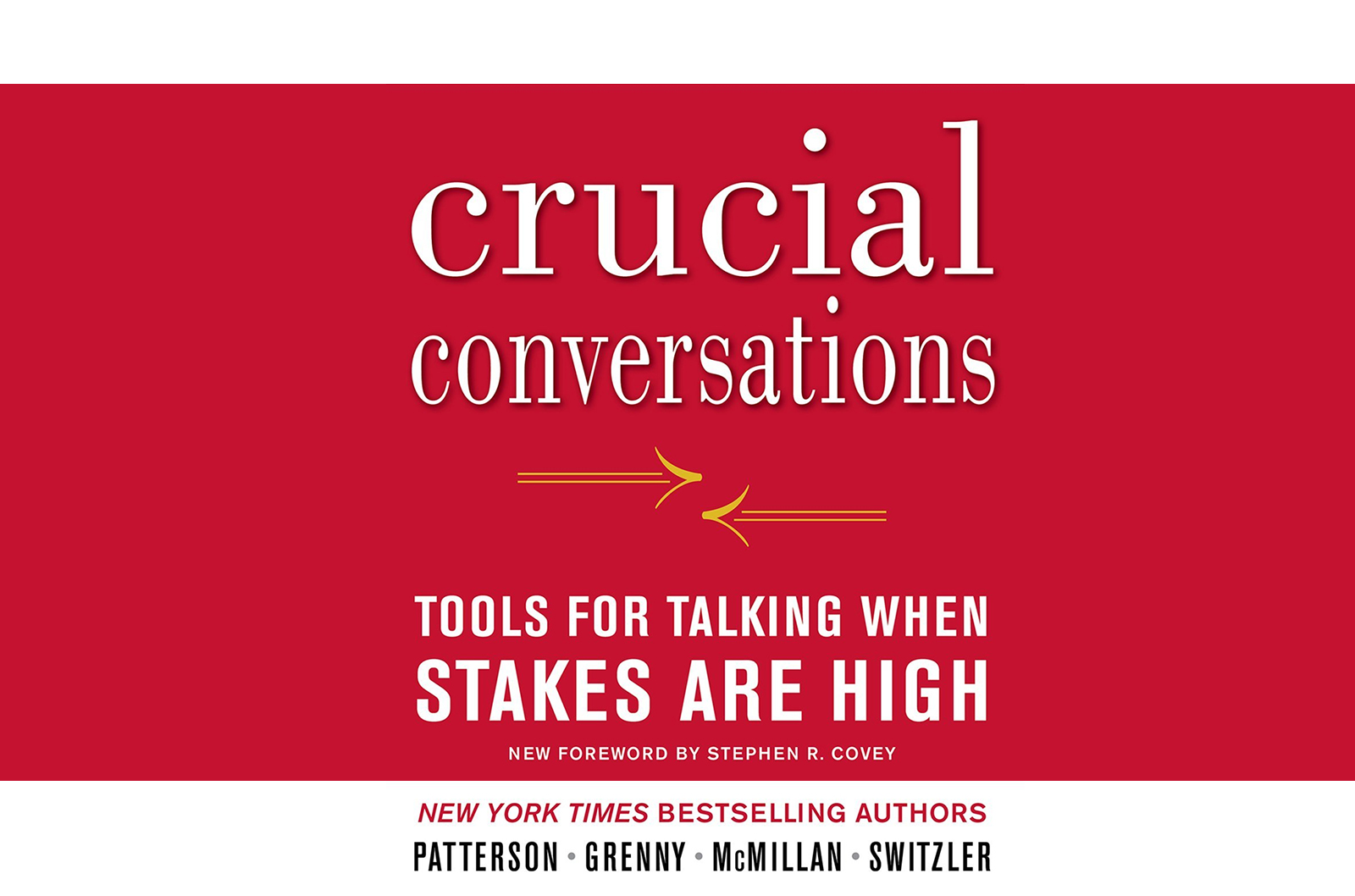“Crucial Conversations” by Patterson, Grenny, McMillan and Switzler is not a book that should be glanced over. When you really immerse yourself in this book, you’ll find that it holds immense value in developing professional and personal communications. After reading this review, I hope that you will have a desire to dive into the book and learn from those who are masters of crucial conversations.
One of the best qualities of “Crucial Conversations” is its simplicity. Even the definition of a crucial conversation is easy to follow, defined as, “One in which opinions vary, stakes are high and emotions run strong.” The book also has a straightforward approach to tackling some of the most important, yet potentially volatile, communications. It is both a relief and tremendously valuable in today’s world.
Throughout the book, there is a consistent focus on the whole reason for engaging in a crucial conversation, which is to move toward tangible actions that achieve desired results. The authors continually emphasize that a crucial conversation is not an end in itself, but rather a means to a positive, productive and lasting outcome for the issue at hand and the relationship between the parties.
There is a firm, unwavering way in which the key message of personal ownership is anchored repeatedly throughout the pages of “Crucial Conversations.” It reminds me of the lyric from Michael Jackson’s “Man in the Mirror.”
“If you want to make the world a better place take a look at yourself, and then make a change!”
Controlling ourselves is the key to holding effective crucial conversations.
The “what” and “how” is key to handling a crucial conversation. Be sure to stay true to all three qualities: simplicity, action and results, and personal ownership. The first step is simple. “Start with heart.” This requires personal ownership and challenges each of us to make sure we are in the right emotional state to move on to action and results.
The next two steps focus on creating and maintaining an environment of safety so that open dialogue can occur.
Only when there is open communication can everything be put on the table, or as the authors call it, “Be brought into the ‘Pool of Shared Meaning.’”
After studying “Crucial Conversations”, I recognized three main takeaways. The first is my habit of blurring and blending facts and stories based on perception. The second is my need to have both facts and stories within the “Pool of Shared Meaning” from all concerned parties. The third and final takeaway is agreement upon which are facts and which are stories by all involved in the crucial conversation. It is then key to culminate with a move to action and desired results.
Referencing “Crucial Conversations” and utilizing the principles and practices within its pages has become an essential part of improving my communication and better serving team members, peers and customers. Study and discussion of all this book offers is part of the leadership development program at England Logistics. Regardless of your role within a company, “Crucial Conversations” offers guidance to develop your skills and achieve your goals.
– Wayne Davis, VP of Talent Development
###
As a Talent Management/HR executive with over 20 years of talent and human resource management experience, I strive to deliver value generating services to internal and external clients. This has provided me with the ability to lead or influence people in developing solutions to achieve higher levels of measurable success. My professional interests are targeted toward helping clients achieve their optimum performance through people solutions.



